- Zoology
- Daily Critter Facts
- For Teachers
- Study Guides
- Diseases & Parasites
- Contact


Biomes are vast ecological areas on the Earth’s surface, characterized by the distinct animal and plant species that have adapted to their specific climate and environmental conditions. These large-scale communities are primarily defined by factors such as temperature, precipitation, and the types of soil and vegetation present, leading to recognizable ecosystems like deserts, rainforests, tundras, grasslands, and aquatic environments. Each biome represents a unique interplay of living organisms and their physical surroundings, forming the major habitats of the world.
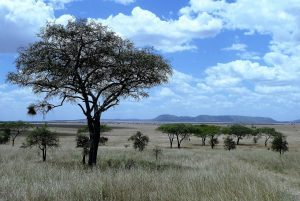
Savanna
Lacking an abundance of water and higher temperatures can make it difficult for trees and plants to grow. The flora and fauna that does grow has evolved to be able to handle long periods of time with no water and high temperatures. Savanna biomes are the midway point between forests and grasslands.
Some animals that can be found in a savanna biome are: cheetahs, elephants, gazelles, hyenas, leopards, lions, ostriches, rhinos, warthogs, wildebeests, zebras, and more.
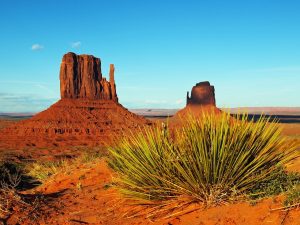
Desert
Deserts cover approximately 20% of the earth and are on every continent. Typically speaking desert biomes receive less than 11.81 inches of rain a year. Some receive far less than that. The The Atacama Desert, in fact, gets only .03 inches of rain per year! The flora and fauna that live in deserts have evolved, over millions of years, to be able to go long periods with no water, get water from the foods they eat, and can even produce waste with little to no water loss. Temperatures can range from as cold as 24.98°F to as hot as 134.1°F!
Some critters that dwell in a desert biome are: bobcats, golden eagles, kangaroo rats, peccaries, pronghorns, rattlesnakes, tarantulas, and even more.
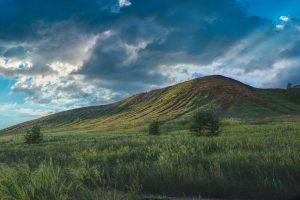
Grassland
Grasslands typically exhibit flat or low rolling hills with large areas of just that… grass. The climate is relatively dry and the grassland biome is usually nested between temperate forests at higher latitudes and desert biomes at subtropical latitudes. Being prone to drought, this biome is also subject to wild fires. Trees are sporadic as there isn’t enough moisture to sustain many. The trees that do grow here are usually shorter.
Grassland biomes are home to: bison, black-footed ferrets, coyotes, deer, elk, mountain lions, prairie dogs, and more critters.
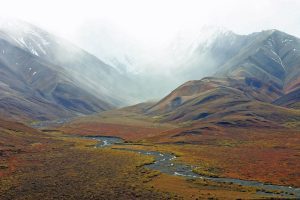
Tundra
Being the coldest of the biomes, tundra is best described as receiving low amount of rainfall and thus making it very similar to desert biomes, in that respect. The primary difference is the temperatures. Tundra biomes are located right below the ice caps of the Arctic. This biome receives around or less than 10 inches of rain per year. Tundra also contains permafrost (substrate below the top soil that is permanently frozen all year long). This biome also typically contains little plant and animal life.
Tundra biomes are home to: arctic foxes, arctic hares, caribou, lemmings, polar bears, ravens, squirrels, voles, wolves, and more.
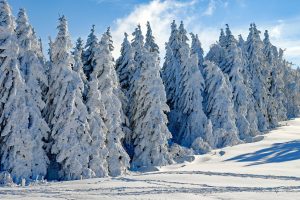
Boreal Forest
Comprised predominantly of cold tolerant coniferous species like fir and spruce, the boreal forests reside in the northern hemisphere. Freezing temperatures are reached 6 – 8 months out of the year. Trees in this biome reach an average height of 16.40 feet and have up to a 10% canopy coverage. The trees in this biome are also needle-leaved. The seasons are typically characterized by long winters and short, but cool summers.
The boreal forest supports the following fauna: bison, black bears, caribou, elk, moose, grizzly, and wolves, to name a few.
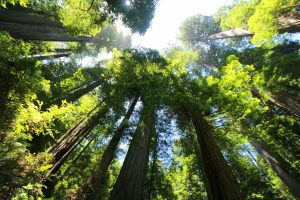
Temperate Forest
This is one of earth’s primary habitats. This biome gets high levels of rain and general humidity, & sports a selection of deciduous trees. Due to leaf fall, the soil is usually rich with nutrients. The leaves of trees are arranged in strata: canopy, understory, shrub, and ground cover. Light usually has a hard time penetrating the lower level plants. There are also 4 distinct seasons.
Temperate forests contain a variety of critters such as: cardinals, opossums, pileated woodpeckers, porcupines, raccoons, red foxes, snowy owls, white-tailed deer, and others.
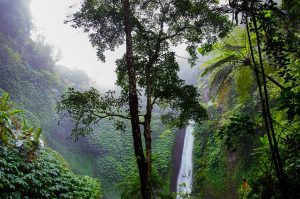
Tropical Rainforest
Hot, moist, and with typical year-round rainfall, with an incredible abundance of flora and fauna, the tropical rainforest is a biodiversity hotspot. Due to the large amount of rainfall, the soil is typically nutrient poor, as much of the soil’s nutrients gets washed away daily. Your typical rainforest can receive a staggering 78.74 inches of rain per year! Temperatures rarely drop below 68°F and seldom get over 95°F. There are no discernible seasons, as it is hot and humid all year long. This biome rests, globally, above, below, or along the Equator.
Tropical rainforest biomes support the greatest diversity of life on land. The amount of animals is still changing and continues to grow. You can find critters like: agouti, dart frogs, jaguars, kinkajous, lemurs, lizards, ocelots, salamanders, sloths, snakes, tapirs, and a massive inventory of arthropods, like tarantulas, centipedes, and much more.
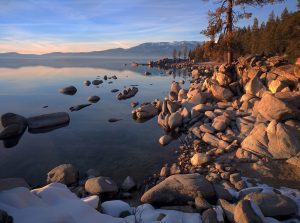
Freshwater
A freshwater biome contains little or no salt in the water. This biome is characterized by the presence of creeks, lakes, ponds, rivers, and streams that are typically inland but that can flow into the ocean. Ponds and lakes are typically basins filled with fresh water, either from rainfall, runoff, or by being fed from creeks, streams, and/or rivers. The depressions created by flowing water from rivers and streams is called a channel, and the bends along a creek, stream, or river’s path are called meanders. These biomes typically have an abundance of life, since there is usually an ongoing supply of water.
Creatures like alligators, beavers, capybaras, dragonflies, dugongs, fishing cats, hellbenders, kingfishers, otters, snapping turtles, plus others.
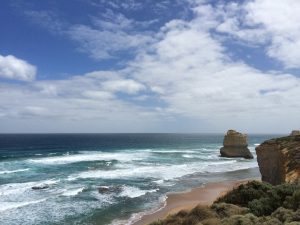
Marine
Characterized by oceans, estuaries, and coral reefs, marine biomes possess water that contains a medium to high concentration of salt in the water. Inhabitants of saltwater biomes have to contend with available sunlight, the amount of dissolved oxygen, and nutrients available in the water. The temperature fluctuations are not typically that great, sans in the tidal pool or shallower regions. Saltwater biomes contain a surface photic zone and a deeper water aphotic zone. There are also a variety of other zones as well: the sunlight zone (epipelagic), the twilight zone (mesopelagic), the midnight zone (bathypelagic), the abyssal zone (abyssopelagic), and the hadal zone (trenches).
Saltwater biomes, especially reef habitats, have a seemingly infinite amount of creatures that dwell at various depths. Critters like: blue whales, clams, clown fish, cuttlefish, dolphins, eels, groupers, manatees, nudibranchs, octopuses, seahorses, seals, sea otters, sharks, stingrays, sunfish (molas), swordfishes, tuna, walruses, and tons more.
